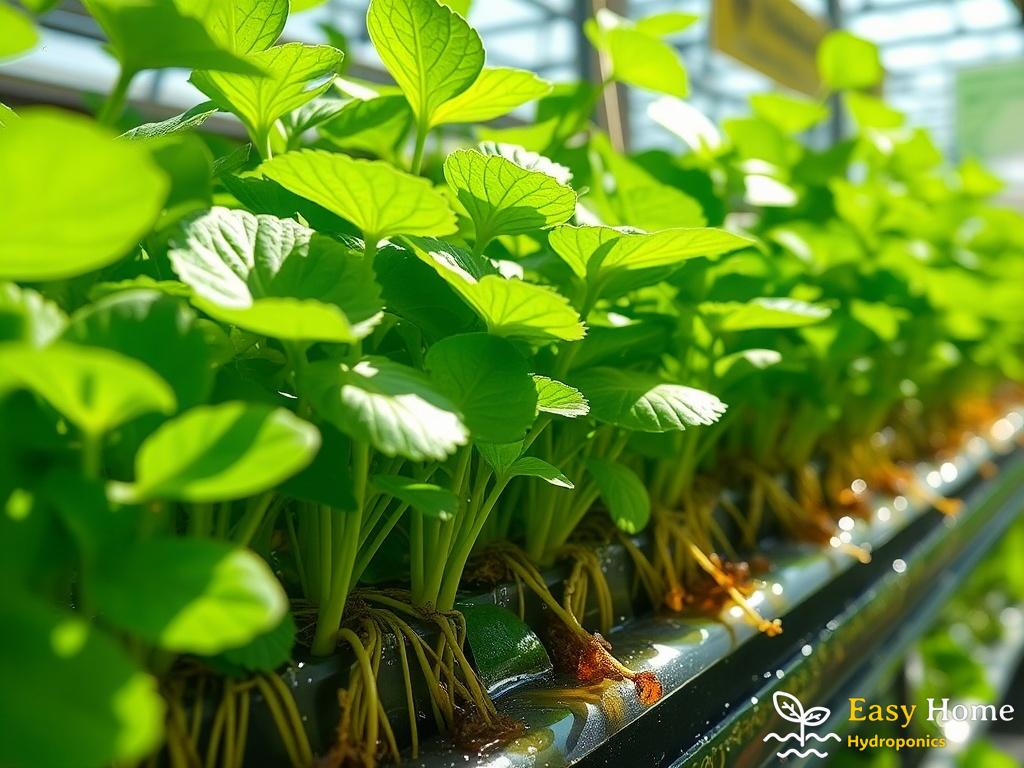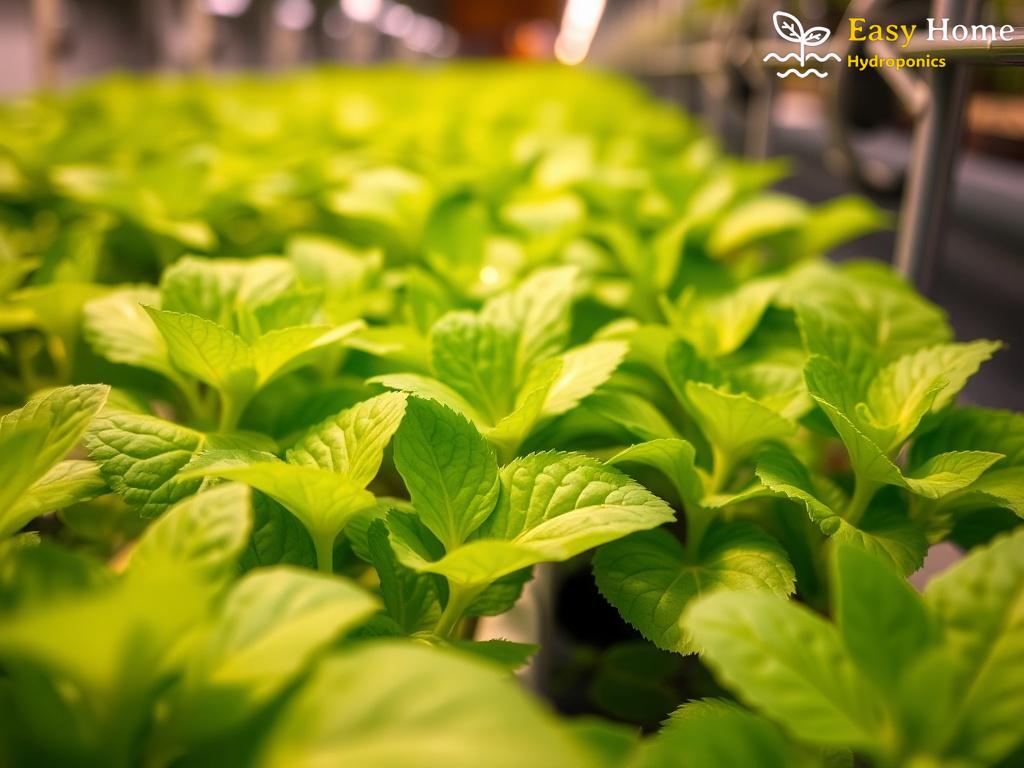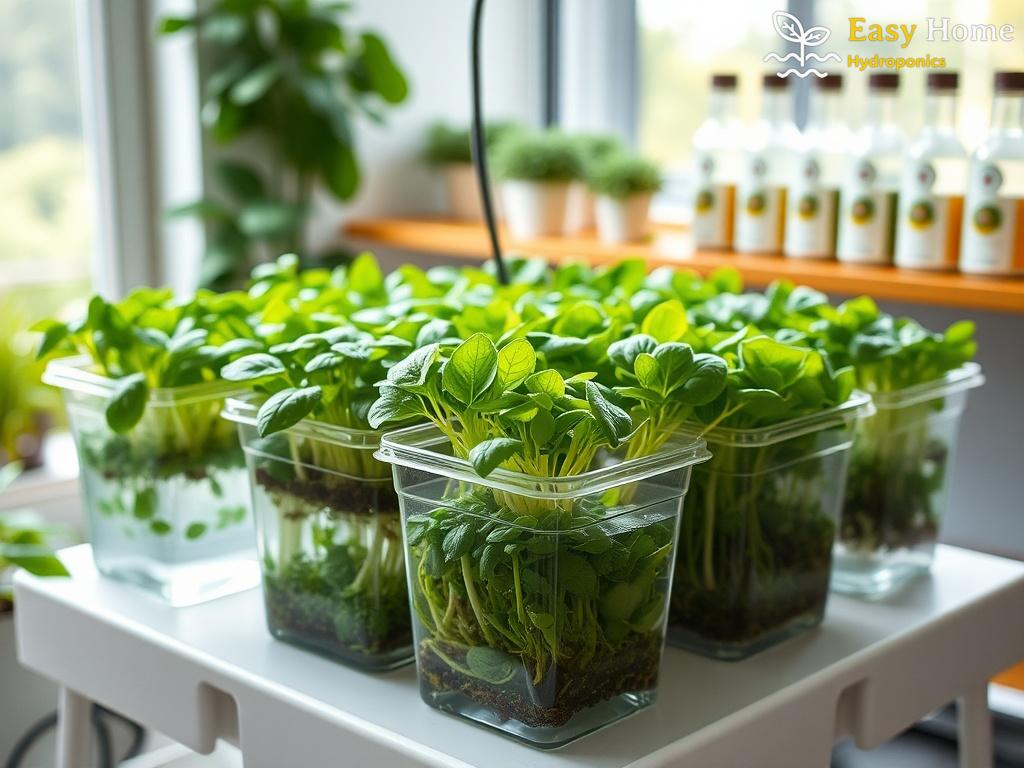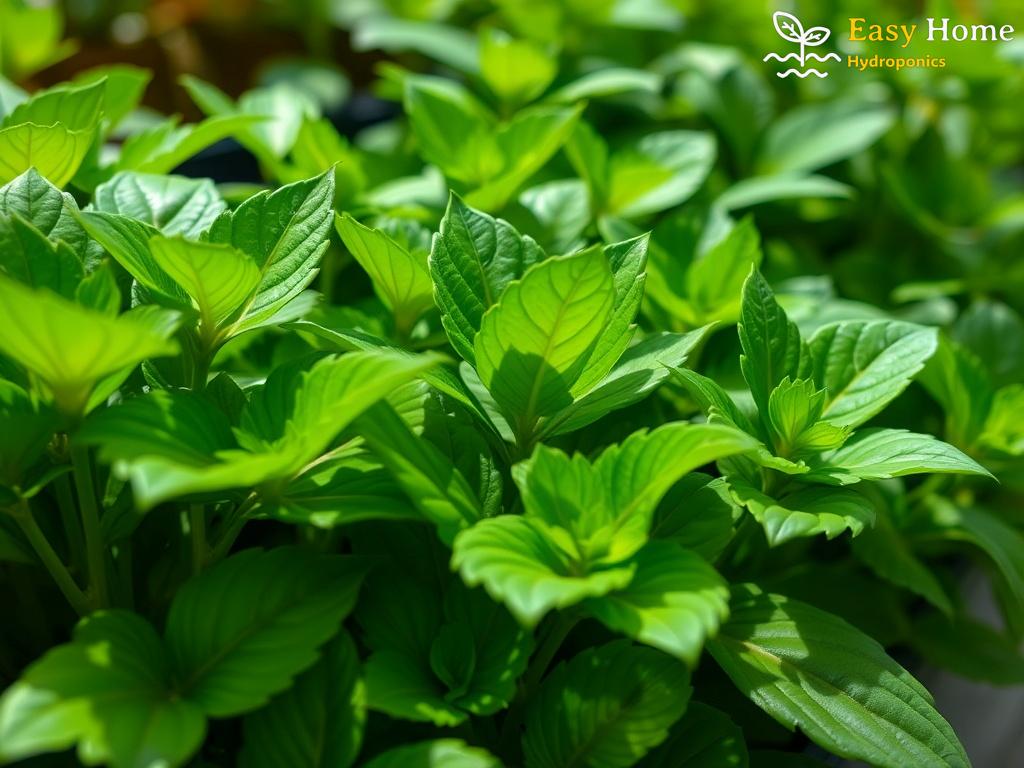Unlocking Nickel’s Secrets: The Hidden Role in Plant Nutrition
When it comes to nurturing our hydroponic plants, we often focus on the big players in plant nutrition like nitrogen, phosphorus, and potassium. However, lurking in the shadows is a lesser-known but equally vital nutrient: nickel. This trace element is essential for various plant functions, and understanding its role can unlock a new level of health and productivity for your indoor garden.
Nickel, despite its tiny quantity needed by plants, plays a pivotal role in the enzyme systems that facilitate essential biochemical processes. Without it, your plants could suffer from deficiencies that hinder their growth and yield. Let’s delve deeper into the significance of nickel in plant nutrition.
Nickel’s most recognized role in plants is its involvement in the formation of enzymes that help in the synthesis of urea, an important component of plant metabolism. But that’s just the tip of the iceberg! Nickel also contributes to the following:
- Chlorophyll Formation: Nickel is crucial for chlorophyll synthesis, which is essential for photosynthesis.
- Iron Uptake: It facilitates the uptake of iron, helping to prevent chlorosis and enhance green foliage.
- Seed Germination: Nickel plays a role in seed germination, ensuring that plants have a strong start.
- Stress Resistance: It enhances plant resilience against environmental stresses.
These functions highlight why it’s essential to incorporate the right amount of nickel in your hydroponic nutrient solutions. A deficiency can lead to stunted growth and poor plant health, while the right balance promotes thriving plants.
Finding the right balance of nickel in your hydroponic system can be a delicate task. Too much nickel can be toxic to plants, leading to leaf necrosis and other issues. Conversely, too little can stunt growth and reduce yield. Here’s a simple guide to ensure your plants get just the right amount of this essential nutrient:
| Nickel Concentration (ppm) | Plant Response |
|---|---|
| 0.01 – 0.05 | Optimal Growth |
| 0.06 – 0.10 | Potential Deficiency Symptoms |
| 0.11 – 0.20 | Normal Range |
| 0.21 – 0.30 | Toxicity Symptoms |
To supplement nickel safely, consider using chelated forms of nickel that are more readily absorbed by plants. Regularly test your nutrient solution to monitor nickel levels and adjust as necessary. By keeping nickel levels balanced, you can help your hydroponic plants achieve their full potential.
Nurturing Growth: How Nickel Boosts Hydroponic Health

In the quest for achieving lush, vibrant hydroponic plants, the importance of trace elements often gets overshadowed by the more commonly discussed nutrients. However, nickel stands out as a critical player in enhancing plant health and productivity. Its subtle yet significant influence on plant systems can be the key to unlocking a new level of growth that many hydroponic gardeners overlook. Let’s explore how this often-ignored nutrient contributes to a flourishing indoor garden.
Empowering Enzymatic FunctionalityNickel’s role in plant health is intricately linked to its function in enzymatic processes. It is a fundamental component in the formation of certain enzymes, particularly those involved in urea metabolism. This connection means that nickel not only aids in the synthesis of essential compounds but also plays a pivotal role in maintaining the overall metabolic balance within plants. When nickel is present in adequate amounts, plants can process nutrients more efficiently, leading to enhanced growth rates and improved yields. Without it, plants may struggle to perform basic functions, resulting in stunted growth and diminished vitality.
Boosting Resilience Against StressorsOne of the most fascinating aspects of nickel supplementation is its ability to bolster a plant’s defense mechanisms. Hydroponically grown plants often face various environmental stressors, such as nutrient imbalances, pests, and disease pressure. Nickel enhances a plant’s resilience by promoting effective iron uptake, crucial for maintaining chlorophyll levels and, consequently, photosynthesis. This enhancement not only contributes to healthier foliage but also empowers plants to better withstand adverse conditions. Healthy plants are better equipped to fend off threats, making nickel a valuable ally in the pursuit of optimal plant health.
Moreover, studies have shown that plants supplemented with nickel exhibit improved seed germination rates. This is particularly beneficial for hydroponic gardeners seeking to maximize their crop yields. By ensuring that nickel is included in nutrient solutions, gardeners can provide their plants with the necessary tools to thrive right from the very start of their growth cycle. The cumulative effect of these benefits underscores why nickel is not merely an optional supplement but an essential component of a successful hydroponic venture.
Nickel Deficiency: Signs and Solutions for Your Plants
In the world of hydroponics, where every nutrient plays a pivotal role in plant health, nickel often gets overlooked. However, this trace element is crucial for your plants’ vitality, and recognizing the signs of nickel deficiency can make all the difference in ensuring a thriving indoor garden. When plants lack nickel, they may exhibit specific symptoms that can significantly impact their growth and productivity. Understanding these signs is the first step toward implementing effective solutions for your hydroponic setup.
When nickel levels drop below optimal thresholds, plants can show telltale signs of distress. One of the most common indicators is the appearance of chlorosis, particularly in younger leaves, causing them to turn yellow while the veins remain green. This yellowing can lead to poor photosynthesis, ultimately affecting the plant’s overall health. Another symptom to watch for is necrotic leaf spots, which can develop as the deficiency worsens, leading to the death of leaf tissue and even affecting fruit and seed production. If you observe stunted growth or delayed seed germination, these could also be subtle signs that your plants are not receiving adequate nickel.
Fortunately, addressing nickel deficiency in your hydroponic system is achievable with a few strategic interventions. First and foremost, consider testing your nutrient solution to determine the current nickel levels. This will provide a clear baseline from which to make adjustments. If you find that nickel is indeed lacking, incorporating a chelated nickel supplement into your feeding regimen can effectively restore balance. These formulations are designed to improve absorption and minimize toxicity, ensuring that your plants receive the correct dosage without risk of overexposure.
Moreover, it’s vital to maintain a consistent monitoring routine. By regularly checking both the nutrient solution and the health of your plants, you can promptly identify any fluctuations that may require further adjustments. Additionally, ensuring a well-balanced nutrient mix will help mitigate any potential deficiencies of other elements that could exacerbate nickel’s impact. By taking these comprehensive steps, you can create an environment that not only nurtures your plants but also supports their long-term health and productivity.
Optimal Dosage: Balancing Nickel for Maximum Yield
In the realm of hydroponics, achieving optimal plant health is a multifaceted endeavor, where every nutrient plays a unique role. Nickel, though often considered a minor player, serves as a vital component in the intricate web of plant nutrition. The key to unlocking its full potential lies in understanding the optimal dosage required for maximum yield. Too little can lead to deficiency, while too much can be toxic, making precise measurement crucial.
Research indicates that hydroponic plants thrive within a specific range of nickel concentration, typically between 0.01 to 0.20 ppm. This range not only supports enzymatic functions but also enhances the overall metabolic efficiency of the plants. For instance, chlorophyll production hinges on the presence of nickel, directly influencing photosynthesis and, consequently, growth rates. However, the challenge arises when determining the exact requirements for different plant species.
In many cases, plants in the vegetative stage may require higher nickel levels than those in the flowering stage. This is where a consistent monitoring routine comes into play. Regularly testing your nutrient solution will allow you to adjust nickel concentrations based on the specific needs of your plants at various growth stages. To illustrate, consider the following table that highlights the relationship between nickel concentration and plant response:
| Nickel Concentration (ppm) | Plant Response |
|---|---|
| 0.01 – 0.05 | Optimal Growth |
| 0.06 – 0.10 | Potential Deficiency Symptoms |
| 0.11 – 0.20 | Normal Range |
| 0.21 – 0.30 | Toxicity Symptoms |
Achieving the perfect balance of nickel in your hydroponic system requires a combination of knowledge, observation, and adaptation. Your plants will send signals when they are not receiving the right amount of nickel; yellowing leaves and stunted growth can indicate a need for adjustment. Utilizing chelated forms of nickel can enhance absorption and reduce the risks associated with over-fertilization. Remember, the goal is not just to supply nickel but to create an environment where plants can utilize this nutrient effectively.
In conclusion, striking the right balance of nickel in your hydroponic system is essential for maximizing yield and promoting plant vitality. By understanding the optimal dosage and regularly monitoring your nutrient solution, you can cultivate a thriving indoor garden that harnesses the full potential of this often-overlooked element.
Beyond Basics: Innovative Ways to Integrate Nickel in Hydroponics
As hydroponic enthusiasts continue to explore the multifaceted world of nutrient management, nickel supplementation emerges as a powerful ally in nurturing vibrant plant life. While conventional methods of adding nickel are well-documented, the potential for innovative integration strategies can elevate your hydroponic experience to new heights. Here, we delve into some pioneering approaches that not only enhance nickel absorption but also maximize its benefits for plant health.
One of the most effective yet often overlooked strategies for nickel integration is through foliar sprays. This method allows for rapid absorption of nutrients directly through the leaves, providing an immediate boost to plant health. When creating a foliar spray, consider using a chelated nickel solution, which is more bioavailable for plants. The application can be timed during the early morning or late afternoon to minimize evaporation and maximize uptake. Regular foliar applications can lead to noticeable improvements in leaf color and overall vigor.
In hydroponic systems, the idea of soil amendments may seem counterintuitive, yet incorporating organic materials that are rich in nickel can provide a unique solution. For instance, utilizing compost teas made from nickel-rich organic matter can introduce this trace element into your nutrient solution naturally. This innovative approach not only enhances nickel levels but also boosts beneficial microbial activity, fostering a more balanced and resilient growth environment. By experimenting with such organic integrations, hydroponic gardeners can create a synergistic ecosystem that promotes healthier plants.
Companion planting is not just for traditional gardening; it can be a game-changer in hydroponics, especially when considering nickel supplementation. Certain plants, such as legumes, can enhance soil health and contribute to the overall nutrient profile of your hydroponic system. By integrating companion plants known for their nickel-accumulating properties, you can create a more diverse nutrient environment. This co-cultivation method can lead to improved nickel availability while also promoting biodiversity, which is essential for a thriving hydroponic ecosystem.
Innovative Strategies for Nickel Integration:
- Foliar Sprays: Use chelated nickel solutions for rapid leaf absorption.
- Organic Amendments: Incorporate compost teas rich in nickel for natural nutrient enhancement.
- Companion Planting: Pair nickel-accumulating plants with hydroponics to foster nutrient diversity.
By embracing these innovative methods, hydroponic gardeners can not only optimize nickel supplementation but also enhance the overall health and productivity of their indoor gardens. The journey into advanced nutrient management is not just about meeting basic requirements; it’s about unlocking the full potential of your hydroponic plants through creative and thoughtful integration.




